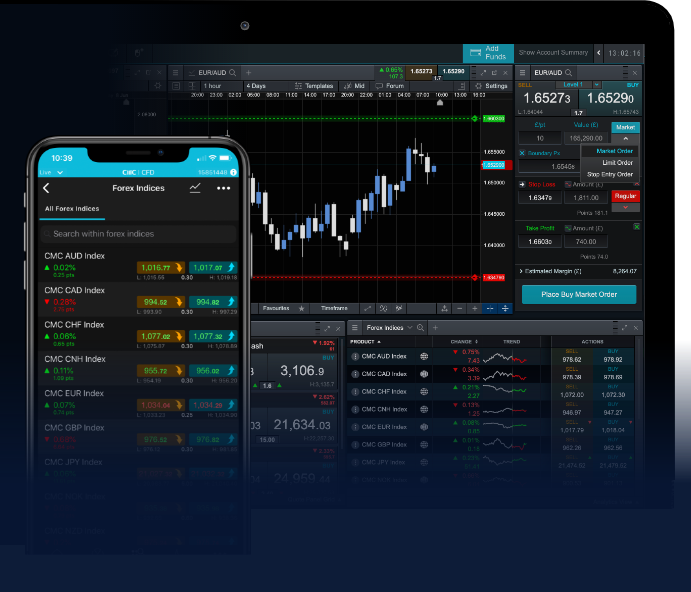
Swing trading is a popular trading style that allows traders to capitalize on short to medium-term price movements in the Forex market. This method is ideal for those who cannot dedicate their entire day to trading. Instead, swing traders typically hold onto their trades for several hours to several days, seeking to profit from market swings. If you’re looking to dive into the world of swing trading, consider utilizing the swing trading forex LATAM Trading Platform for its range of tools and resources.
What is Swing Trading?
Swing trading is characterized by a focus on capturing gains in a stock (or other financial instruments) within a short to medium timeframe. Unlike day trading, which involves making multiple trades within a single day, swing trading focuses on holding a position longer to take advantage of significant price movements. Swing traders use various technical analyses and market indicators to inform their trades, often seeking to benefit from ‘swings’ in the market.
The Basics of Forex Swing Trading
Forex swing trading specifically refers to applying swing trading strategies to the foreign exchange market. Since the Forex market is open 24 hours a day, it provides ample opportunity for traders to identify potential swings across various currency pairs. Swing traders generally utilize a mix of technical analysis, chart patterns, and market news to make informed decisions.
Key Characteristics of Swing Trading:
- Time Frame: Swing traders typically hold their positions from a few days to a couple of weeks.
- Market Focus: They focus on the most volatile currency pairs that offer substantial movement opportunities.
- Analytical Approach: They rely heavily on technical indicators, like moving averages, RSI, and MACD, for trade signals.
- Risk Management: Swing traders implement comprehensive risk management strategies to protect their capital.
Strategies for Success in Swing Trading
To be a successful swing trader, you must adopt certain strategies that enable you to identify potential trades while managing risk effectively. Here are some key strategies to consider:
1. Identify Key Support and Resistance Levels

Support and resistance levels act as psychological barriers in the Forex market. Swing traders can analyze these levels to determine where to enter and exit trades. A strong support level may indicate a good buying opportunity, while resistance may signal a potential sell.
2. Utilize Technical Indicators
Technical indicators, such as the Relative Strength Index (RSI), Moving Average Convergence Divergence (MACD), and Bollinger Bands, can add more precision to your trades. For example, an RSI reading above 70 may indicate overbought conditions, while below 30 indicates oversold conditions. These indicators can help traders make informed decisions about entry and exit points.
3. Embrace Fundamental Analysis
While swing trading is mainly technical, understanding fundamental news events can dramatically affect currency prices. Economic indicators, interest rate decisions, and geopolitical events can lead to unforeseen volatility. Swing traders should stay updated on relevant news to anticipate potential price swings.
4. Maintain a Trading Journal
Keeping a trading journal is vital for any trader, particularly for swing traders. Recording your trades, strategies, outcomes, and emotions can help you review your performance, identify patterns, and make necessary adjustments to improve your trading strategy.
Risk Management in Swing Trading
Even with solid strategies in place, risk management remains an essential aspect of swing trading. Here are some tips to manage risks effectively:
1. Set Stop-Loss and Take-Profit Orders

Establishing stop-loss and take-profit levels before entering a trade is vital. A stop-loss order protects your capital by closing the trade at a pre-determined loss level. Conversely, a take-profit order allows you to lock in profits when your target price is hit.
2. Position Sizing
Properly sizing your positions based on your account size and risk tolerance will help you avoid significant losses. A common rule is to risk only a small percentage (typically around 1-2%) of your trading capital on a single trade.
3. Diversify Your Trades
Diversifying your trades across different currency pairs or asset classes can help mitigate risk. It ensures you’re not overly exposed to a single position, protecting your overall capital in case one trade does not go as planned.
Choosing the Right Trading Platform
To kickstart your journey in swing trading, selecting a reliable trading platform is crucial. Features to look for include:
- User-friendly interface
- Comprehensive charting tools
- Access to technical indicators
- Low transaction costs
- 24/7 customer support
Platforms like LATAM Trading Platform offer various services ensuring traders have the best possible experience.
Conclusion
Swing trading in the Forex market can be an effective way to generate profits while maintaining a balanced lifestyle. By understanding the mechanics of swing trading, implementing strategic approaches, and adhering to a robust risk management plan, traders can navigate the Forex market more effectively. Remember that success in trading does not come overnight; it requires consistent effort, learning, and patience. Embrace the journey of swing trading and explore the opportunities that lie within the Forex landscape!
